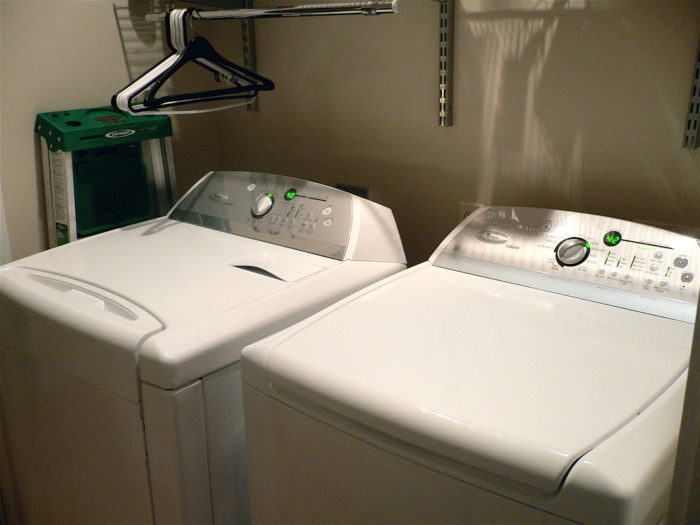
Image Credit: Tim Dorr / CC BY-SA 2.0 / Flickr
The exhaust from a conventional clothes dryer is full of moisture and lint, and the best place to vent it is directly outside. Matt Culik knows this, but his particular situation makes him wonder whether there are circumstances when this rule might be broken.
Culik will soon be moving into a new house, and the intended laundry room does not have a vent connection for a clothes dryer. Coincidentally, he is planning to replace an old electric hot water heater with a heat-pump water heater, and this has given him an idea.
“Rather than drill a hole in the side of the house for the vent,” he asks in a Q&A post at Green Building Advisor, “would it make sense to vent the hot, humid dryer exhaust into the basement? (Obviously, I would need to address the lint issue, but stay with me…) My thought is that this would provide ‘better’ air for the heat pump, and the heat pump would cool and dehumidify the basement.
“I know going in that this is probably a terrible idea,” he continues, “but figured I’d ask just in case. … I’m guessing the air is way too wet to be properly dehumidified by the heat pump, and I’m asking for mold and general dampness problems.”
Culik’s question is the focus for this Q&A Spotlight.
Lint is potentially a big problem
There are at least two reasons not to try this, says GBA senior editor Martin Holladay.
“The lint problem is insoluble,” he says. “And damp lint sticks to everything (with the potential of gumming up the heat pump water heater compressor).”
Second, there’s no guarantee the water heater and the clothes dryer would be operating at the same time.
Even if Culik were to install…
Weekly Newsletter
Get building science and energy efficiency advice, plus special offers, in your inbox.

This article is only available to GBA Prime Members
Sign up for a free trial and get instant access to this article as well as GBA’s complete library of premium articles and construction details.
Start Free TrialAlready a member? Log in





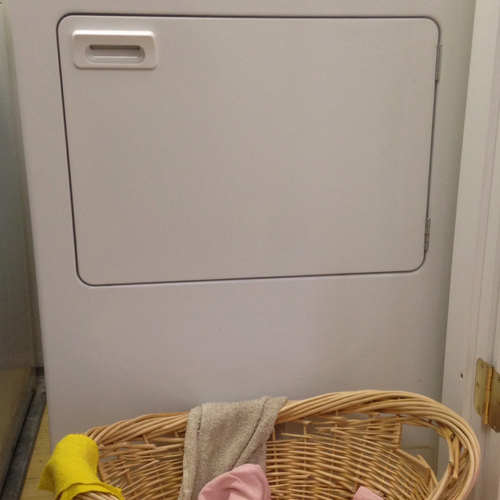
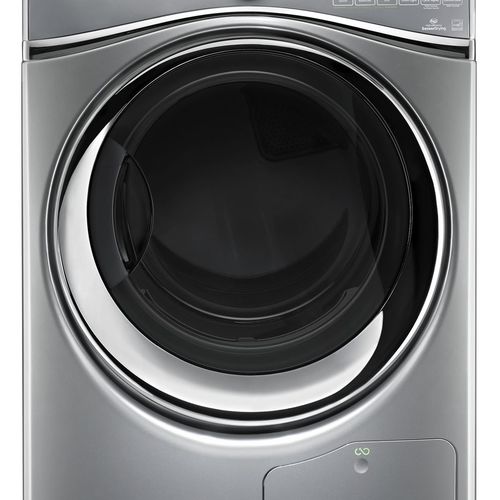
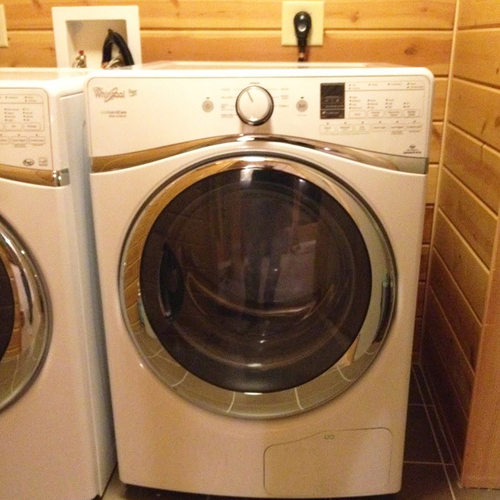
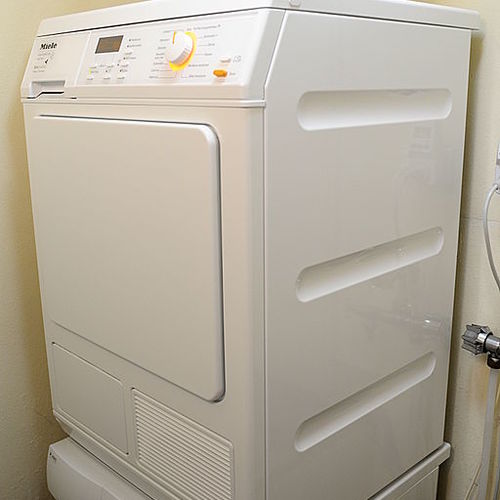






10 Comments
Code requirements
The Mechanical Code has restrictions too. I was curious about venting into an attached garage until I looked up what the Code has to say.
504.1 Installation. Clothes dryers shall be exhausted in accordance with the manufacturer's instructions. Dryer exhaust systems shall be independent of all other systems and shall convey the moisture and any products of combustion to the outside of the building.
Exception: This section shall not apply to listed and labeled condensing (ductless) clothes dryers.
Peter Yost indoor clothes drying
For those that aren't running a HRV or other ventilation system, any reason you couldn't run a dehumidifier in the room where you've hung the clothes?
Response to Jason D
Jason,
My article, Alternatives to Clothes Dryers, discusses the use of a dehumidifier to dry clothes.
You might also want to read this British web site with information on the topic:
http://wiki.diyfaq.org.uk/index.php?title=Clothes_dryer
Response to Martin
Thanks for the links!
Fabric Matters
Just wanted to add that fabric matters. Where as we end up putting our cotton towels in the dryer (vented to the outside) sometimes, my work clothes that are largely synthetic come out of a high speed spin so dry I could almost put them in the closet (I actually have at times). These have never seen the dryer, I haven't weighed them but I doubt there's a pound of water there.
Also, my experience having a heat pump water heater next to where we hang our clothes in the basement is that the drying effects are overstated. The dew point drops some but the temperature goes right down with it and if you don't use much hot water it's not on very much anyway.
Dryers - venting the dryers
For about the last two years, my wife and I (partners in small engineering company) have been doing some rather detailed esoteric research on the clothes dryer processes. We've traveled into Canada across most of the northern US states (including NY), in the midwest, west coast and southwest where we have repeated the tests. About thirty different locations... nearly 150 test runs thus far. The tests were in-situ... at homes where we would add data loggers to the room to measure moisture and the heat radiation. We logged temperatures in side the drums while using the dryer.
This was not an energy efficiency test. For the most part we didn't care about energy consumption. We wanted to really understand the environment and the drying process. For the testing in the US and Canada we used a Costco Charisma bath towel. Six towels typically weigh about 4.7kg dry. We'd log RH and temp while drying medium heat... record the time, use pin tester to confirm towels were dry... then analyze the data in the drum. For the environmental data we would look at what happened in the room when we ran the three - five loads of bath towels in a long day at the site. Typically eight to ten hours sitting and waiting for a dryer.
The outcome from what we could see on the room data loggers - is that the laundry process adds humidity to the room... and it wasn't all coming from the dryer. The moist air diffuses from the washing machine (even front loaders) especially when the washers are dumping the waste water. We also noticed a jump in particulate count when we would start the days experiment... big drums in washers and dryers stir up the air and the fine dust moves around.
In nearly all of the NE and midwest houses - there was a dehumidifier in the house - often within eight feet of the laundry machines. Most set at 50% humidity. The data logger for humidity was set near the fronts of the washer/dryers and we could still see a bump in humidity.
First observation - don't expect you that you can control humidity perfectly from the washers and dryers. You will see a small moisture gain. If you are in a humid climate and run dehumidifiers - expect that you've got an increased latent heat load to deal with while the laundry is ongoing. (Year round!)
Second observation - dryers dump a lot of heat into the space around them. A LOT!. We consistently saw a 2 degree C, gain in room temps. Obviously the further from the dryer - the less heat gain... but within six to eight feet... there was a definite gain. That leads to the next conclusion - don't place your laundry washer/dryers in the master bedroom suite, upstairs or near the bedrooms if you are in a hot humid climate... you'd just need to use more air conditioning to offset the gains!
Now for the dryer vent portion... we looked at the venting -- roughly measured the lengths and checked air flows. The first observation was about 40% (give a take a few %) had vent lines with problems. Birds nests, kinked hoses, clogged hoses, hoses that were off the outside connector and dumping moisture into the stud cavity. Another observation is that when dryers are moved... the old dryer vents are often not carefully decommissioned! They are left to leak air from what ever room they are in to the outside environment - no insulation.
Check vents. Having seen lots of installations I am a real believe in using rigid vent pipe, with the seams taped using 3M aluminum tape.... and to manage the heat gain into the space (hot climates) wrap the exhaust pipe in insulation!!! You don't see that happening. But for many of the sites we saw the length of that dryer vent pipe was eight to twelve feet in length - and it was hot. A hot dryer vent hose can dump a lot of heat into a space over an eight hour laundry day. Use as little flexible hose as necessary and stay with the rigid pipe. It is easier to clean, holds up well over the years... and lint fires should they ever happen are contained.
Now about dumping the warm moist air from a dryer into a house in a dry cold environment... don't do it. Each run of towels removed approximately one gallon of water. A typical laundry day could result in a homeowner misting four or five gallons of water over a short period of time into the space near the laundry washer/dryer. Expect condensation and mold! The moisture just will not diffuse as fast and where you expect it to goi.... instead brew some tea on the stove, boil some chicken noodle soup... or simply allow more normal daily activities to add in moisture. If it's really dry enough you need to add moisture - do so with a humidifier that can measure and limit the moisture you add - to what really is needed.
Second issue with dumping dryer byproducts into the living space.... you will see an increase in some rather unhealthy byproducts. VOC's Even if you are not using dryer sheets. - But first the dryer sheets - they are mostly wax with some fragrance and few other chemicals on a very thin mesh. Nearly all of that wax is released during one dryer cycle. Not all of the wax sticks to the clothing, a significant portion is vented out the duct - or - it condenses on the side of the duct with the lint. (Another reason to use rigid vent pipe -- it better handles the wax/lint combination that is flammable).
Now - about the ventless dryers - (heat pump / condensing dryers). We did not test any in the US. It's simply hard to find dryers installed in peoples homes --- when you tell them we will sit there for a full day. However we did just finish testing some dryers in Europe. (We have understanding friends and relatives in Germany and the UK). The dryers we tested were 4cuft in size... about half the typical US dryer. We could not get the Costco towels (we knew ahead of time) so while in the US we had tested some IKEA towels.... that we characterized. We used the IKEA towels for testing in Europe and have sets in the US that we can compare against in some select dryers. Bath towels are smaller in Europe! You can't get a six towel US bath towel load in one load. It would take two loads. The towel cycles took approximately THREE hours to run to completion - using the manufactures recommended setting (IKEA towels). We pin tested the hems to ensure that they were dry. In all testing we weigh the dry, wet and post dried weights! (Similar to DOE procedures).
And yes we still saw humidity gains in to the space by the European dryers... and looking at the room and the dryers - there was this nice 35C+ box sitting in the room radiating heat for nearly eight hours (two loads)... it took twice as long to run the tests as in the US... on the heat pump dryers. The temps in the drum while drying ... still above 60C.
In the UK we had a chance to test a vented dryer -- that the owner had purposely moved to a small tool shed. The dryer house was simply uncoiled and dumped into the air outside the door when you used it, it was a small dryer... air flow around 700ft/min (most US were above 1000ft/min.... (hose sizes 4" if you want to figure cfm). That vented dryer completed a IKEA towel load in about 45 minutes.
But most interesting - when we asked about patterns of how the dryers were used, when they did laundry... the common answer was to put the laundry on one of those devices shown at the bottom of the story above.... the preferred method of drying was a clothes line.
Gas dryer
Unmentioned is whether this is an electric or gas dryer. Presumably this is only even a thought with an electric dryer as a gas dryer needs to vent the combustion byproducts.
Response to Paul W
Paul,
Thanks for your comment.
None of the comments posted in the original Q&A thread recommended that a conventional clothes dryer should be vented indoors.
To the extent that Peter Yost's comments imply that a homeowner might, under some circumstances, consider venting a clothes dryer indoors, you warning is important. The exhaust air from a gas dryer includes combustion byproducts. Dumping those combustion byproducts indoors would be stupid and potentially dangerous.
In all cases, venting a clothes dryer indoors is a code violation. The only exception is for some heat-pump clothes dryers and condensing clothes dryers; for these types of appliances, outdoor venting may be omitted if the manufacturer of the appliance permits it.
Thanks Dennis
Dennis thanks for sharing your results and lessons learned.
My understanding is that the reason heat pump dryers were not introduced in the us sooner is that manufacturers decided Americans would not put up with 3 hour cycle times, and the models now available here are faster.
As noted in another thread recently, insulating the vent also helps prevent condensation inside. If you don't insulate, perhaps in hopes of using the heat in a cold climate, planning to allow condensation to drain out is wise. But that is probably only a problem if the vent runs through a n unconditioned space in a cold climate. Did you see any installations with that problem?
I am curious who if anyone commissioned this study, if you are allowed to say.
Reply to Charlie Sullivan
This was self funded (and expensive). We needed better data about the drying process - so we created the experiments and then ran them. Travel, hotels, towels, labor was paid by us.
We've looked a little bit at using the waste heat in the vent pipe during the heating season. For that you'd still want rigid pipe, sloped slightly down and out toward the outside wall - such that condensation will follow the pipe out. While we've taken data on the heat gain in the whole area - and lots of thermal pictures of the environment - the only house that I studied the heat gain from the pipe alone - is in my house. We are in the Seattle area. The heating season really is only two months long. For the rest of the year the heat is either off - or the best way to provide it is by an efficient and planned HVAC system. During the summer months the waste heat from my dryer vent runs up a wall - under the master bedroom and out the side of the house. 20' of heat during laundry periods. It results in a noticeable gain of heat at a time you'd want to be using air conditioning. Thus the gains during the winter time are probably offset by the summer time cost of cooling to make up for the waste heat entering the home.
As a test I did turn off the furnace last January, did laundry for a day and well into the night (lots of testing), outside temps had dropped to around 40F... Inside house never dropped below 71F. Typically I'd see a three or four degree setback drop during that time. The house is well insulated on the upper floors and air tight.... so a little added heat goes a long way.... in winter and during the hot summer.
Another reason for rigid pipe and insulating - we found one house where we went to check the air flow of the dryer - and nothing was coming out the duct vent. I put borescope into the pipe - when back about 15 feet and suddenly the picture disappeared into a gray fog... not really water fog... just gray.
But the dryer was drying - so we asked if we could look into the crawl space..... BAD NEWS! That plastic dryer vent should have been about 12 feet long... Years ago had water accumulate in it...tear in two and was dumping all the lint and moisture into the crawl space. We were able to determine it was approximately 10 years prior... because the heat system had been updated with a heat pump... and the less than intelligent HVAC installers simply set the uncoiled high pressure and low pressure lines on top of the previously failed dryer vent line.
The result was ten years of moisture and lint in the crawl space. Lint was two or three inches thick. This was a relatives house - Amy and I convinced them it needed to be fixed. We had work clothes along - so Amy crawled into what was then a very hot and humid crawl space... I went with owner to hardware store and picked up semi rigid vent pipe, lots of pipe strapping, nails, and 3M aluminum duct tape. We then spent three hours in crawl space fixing the problem - coming out looking like the "lint monsters" from some Scify movie. We took showers there, changed clothes - continued tests. The homeowners had noticed that on laundry days - especially in the summer - it seemed that the heat pump could never keep up with the heat....
That goes back to the question in the story about venting in basement... effectively that's what was happening in this particular house. It is a bad idea - even if you can capture 90% of the lint. The fine stuff that gets by is small enough to stay airborne and make it into the lungs. I believe if you check there are various lung ailments that textile workers get from breathing the fine fiber products... I won't want that fine lint in my controlled environment - especially since the final rinse almost always leaves some level of detergent in the clothes. And then there are the fabric softeners and "Bounce" like sheets.... very bad stuff to vent inside house.
Most of the heat pump dryers use a resistance heat strip to prime the process. Pure heat pump cycle with out additional resistance heat - will still take a very long time (2-3 hours). Moving off eco - means that the resistance heater is used more often - like a standard electric dryer - and the drying times are better - but still not as fast as standard dryer.
While in Europe, we also ran towel tests on clothes lines... towels outside in southern England were dry in about four hours. Heat pump dryer (European version) took a little over three hours....
Most Europeans either hang the towels outside on the line -- or they simply hang the washed towels on the drying rack in the bathrooms and turn on the heat to the drying rack.
Log in or become a member to post a comment.
Sign up Log in